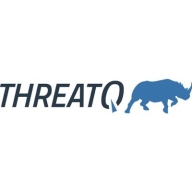

ThreatQ focuses on threat intelligence while GitGuardian Public Monitoring specializes in public code and secret detection. ThreatQ has the upper hand in threat data management and correlation capabilities, while GitGuardian is preferred for its robust secret detection.
What features are offered by ThreatQ in comparison to GitGuardian Public Monitoring?ThreatQ users value its detailed threat data correlation, integration with various security tools, and extensive threat data management. GitGuardian users appreciate its effective detection of exposed secrets, integration with CI/CD pipelines, and public repository monitoring.
What areas of improvement can be found in ThreatQ in comparison to GitGuardian Public Monitoring?ThreatQ could enhance its reporting functions, user training materials, and overall usability. GitGuardian could improve its alerting systems, offer more granular policy management, and develop advanced alerting features.
How is the ease of deployment and customer service of ThreatQ in comparison to GitGuardian Public Monitoring?ThreatQ is praised for its flexible deployment options but has a steep learning curve. GitGuardian is noted for its straightforward setup but lacks extensive customization options. Both products receive positive feedback on customer support, with ThreatQ slightly ahead in service responsiveness.
What setup costs and ROI can be seen with ThreatQ in comparison to GitGuardian Public Monitoring?ThreatQ's pricing is higher but justified by the comprehensive threat intelligence it provides. GitGuardian offers competitive pricing, making it attractive for smaller organizations concerned with code security. ThreatQ delivers strong ROI for large-scale intelligence operations, while GitGuardian provides good value for public repository monitoring.

GitGuardian Public Monitoring allows real-time GitHub scanning and alerting to uncover sensitive company information hiding in online repositories. It monitors both organization repositories and developers' personal repositories. The solution gives visibility to developers and security teams on this very critical blindspot that are the organization developers' personal repositories on GitHub (80% of leaked corporate secrets on public GitHub come from developers’ personal repositories).
GitGuardian Public Monitoring is particularly interesting for companies with large development teams (above 200 developers) and modern development practices.
GitGuardian Public Monitoring cover 350+ API providers, database connection strings, private keys, certificates, usernames and passwords and intellectual property. It uses sophisticated pattern matching techniques to detect credentials that cannot be strictly defined with a distinctive pattern (like unprefixed credentials). The algorithm has a high precision (91% “true positive” feedback following our alerts, as reported by our users.)
The alerting is done in real-time (a few seconds after the secret was publicly exposed) which allows fast remediation involving in a collaborative way developers, security teams and operations.
GitGuardian Public Monitoring also allows red teams and pentesters to proactively look for sensitive information by performing complex queries on 12 billion documents and metadata from more than 3 years of GitHub history.
GitGuardian Public Monitoring scans public GitHub activity in real-time, helping organizations detect sensitive information leaks in source code repositories. Our solution gives Threat Intelligence and Security teams full visibility over their organization’s public GitHub Attack Surface, by monitoring both organization-owned repositories and developers' personal repositories.
With 80% of secrets and credentials leaks on public GitHub finding their source in developers' personal repositories, GitGuardian for Public Monitoring helps organizations address a critical security blind spot.
With real-time incident notification, Threat Intelligence and Security teams are guaranteed to reach the incident scene before everyone else and take action to mitigate the threat of breaches and intrusions.
ThreatQ is a versatile threat intelligence platform designed for effective aggregation, analysis, and management of threat data. It streamlines threat information from multiple sources to enhance understanding and response capabilities.
ThreatQ supports incident response by correlating indicators of compromise and centralizing threat data in a single repository. This platform improves decision-making with its comprehensive threat landscape view and collaborative features. Its detailed analytics, customizable workflows, and scalability offer robust support for security teams. ThreatQ's integration with existing tools and powerful automation capabilities streamline threat detection and response processes. While some users point out the need for better integration and data visualization, ThreatQ remains a preferred choice for many due to its threat prioritization and reporting features.
What are the key features of ThreatQ?ThreatQ is implemented across various industries, providing valuable threat intelligence management in sectors like finance, healthcare, and government. These industries benefit from its incident response support, detailed analytics, and ability to centralize and prioritize significant threats, improving overall security posture.
We monitor all Threat Intelligence Platforms reviews to prevent fraudulent reviews and keep review quality high. We do not post reviews by company employees or direct competitors. We validate each review for authenticity via cross-reference with LinkedIn, and personal follow-up with the reviewer when necessary.